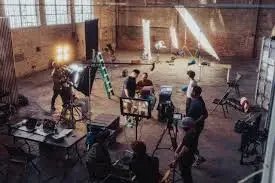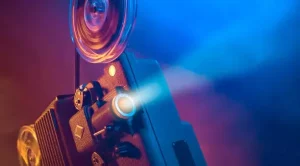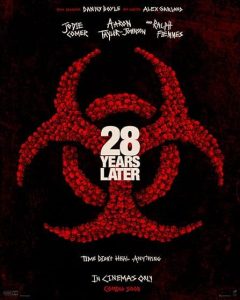Movies. This word may sound simple—we hear it every day, enjoy it every week, often use it as an escape, and occasionally as a companion to our weekend coffee. But it’s not just about entertainment. It can make us laugh until our stomachs hurt, cry quietly in the middle of the night, feel scared even though we know it’s just a story, and even make us rethink the lives we live. Interesting, isn’t it?
But what exactly is a movie? Why can something as simple as “moving images” touch our emotions so deeply? And why is this medium considered so powerful that it can convey messages far deeper than mere words?
More Than Just Entertainment

Technically, a movie is a series of images played back quickly to create the illusion of movement. But honestly, who watches movies just for the movement? We come for the story, for the emotional experience. Behind the scenes, movies are the most expressive form of storytelling. The process of making a movie brings together images, sounds, time, and emotions into a complete experience. The form can be a documentary full of reality, fiction that is entirely imaginary, or a combination of the two that forces us to ask: “Which one is real?”
This is why movies have remained alive since the silent film era, even now in the age of streaming and virtual reality. Because it is not just a medium, but a mirror of humanity itself.
Telling Stories with Words and Gestures

Movies have a similar function to novels or theater performances: they tell stories. But the difference is that movies don’t just say something—they show it. Every camera angle, lighting, sound design, and even the actors’ expressions play an important role. They work together to convey feelings that cannot even be explained in words.
Remember the principle of “show, don’t tell”? In movies, emotions are not explained, but shown. You won’t be given a long narrative about anger. But you will see a red face, clenched fists, and a rising voice.
Movies invite us to feel, not just listen.
As a visual language

Ever heard the term “film is a visual language”? It’s not just a cool term. Movies really do speak through images.
Imagine: a character standing alone in the middle of an empty street. The camera is set in a long shot from a distance. Without a single word, we can feel the loneliness. Or the light from a lamp splitting a face into two parts—suddenly we know there’s an internal conflict happening.
All these visual elements work like grammar in a sentence. Shot composition, blocking, color, and editing rhythm—all speak to the audience. And when combined with music and sound? Boom. A language that anyone can understand, even without dialogue.
More Functions Than You Think
For many people, movies are an escape. A place to take a break from the real world. But if we look deeper, the function of movies is much broader than just entertainment.
- Educational media: Many movies are made to teach history, science, and even ethics. Documentaries or fictional films with moral messages can be fun learning tools.
- Propaganda tools: From the world war era to modern campaigns, movies are often used to influence public opinion.
- Cultural reflections: Movies show values, norms, and even social issues in society. They become a living cultural archive.
- Emotional therapy: Through catharsis, we can feel emotional relief after immersing ourselves in a story.
The most interesting thing is the power of movies to expand empathy. We can experience what it’s like to live as someone else—who may have a background that is very different from ours. And all of that happens in a dark room, on the big screen, or maybe just on a laptop screen in our bedroom.
Where Many Arts Meet

One thing that makes movies so magical is their collaborative nature. Movies are not the work of one person. They are born from the collaboration of various artists in various fields:
- Visual arts: from cinematography, art direction, costumes, to lighting.
- Sound arts: from background music, sound effects, to sound design.
- Literature: script, dialogue, story structure.
- Performing arts: acting, expression, movement choreography.
All these elements are brought together in one medium: film. When everything works in harmony, the results can be extraordinary. Not only aesthetically beautiful, but also emotionally powerful. A good movie can make us forget that it’s just a “story.”
Read also: Color in the Evolution of Cinema Technology
Still Relevant in This Era?
In the era of TikTok, Reels, and 30-second content, you might ask: are movies still relevant?
The answer: yes, and even more so than before. Because amid the digital noise, movies offer something rare—a profound experience. For 90 minutes or more, we are invited into another world. We are invited to feel, think, and sometimes, change.
Movies have evolved. In the past, there were only cinemas, but now there are streaming platforms. In the past, they were black and white, but now they are 8K with Dolby Atmos sound. But the essence remains the same: movies are the language of humans. They help us understand the world—and ourselves—through stories.
Like a Mirror and a Window
Ultimately, movies are like mirrors and windows. They reflect who we are—our deepest feelings, values, and fears. They are also windows that open our eyes to another world—to perspectives we may never have seen before.
Movies can touch, enlighten, entertain, and even change us. Behind the laughter or tears they evoke, there is a power to convey big ideas in a simple way.
And who knows? Maybe behind your favorite movie, there is a small part of you that speaks—about who you are, what you feel, and what kind of story you hope to live.
So, from the last movie you watched, what resonated with you?




